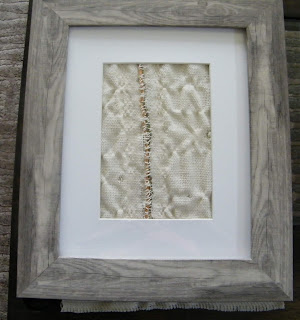I have the idea to turn them into Christmas ornaments. I tried to find some wood ornaments that I could cover but they were all too small. The butterfly motif is 3 ½ by 3 ½. So I decided that I cut my own shapes out of foam board and cover the back of the ornaments with decorative paper since I don’t have enough fabric to cover the whole ornament.
I used some cardboard to make some test pieces to see what size I wanted to make the ornaments. Definitely the bottom one, the bigger the better!
I cut a test piece of foam board, then I cut a piece of test fabric from a scarf that just wasn’t woven well enough, my beat changed from really hard to just a gentle tap by the end of the warp!
First thing I learned was that my fabric was too short to go around the ornament.
So I cut off a ¼ of an inch.
I used school glue to attach the fabric to the foam board and I clipped the corners to reduce the bulk of the fabric. I think that it worked out pretty well. The glue attached the fabric well and it didn’t soak through the fabric.


I tried another ornament; I wanted to perfect the corners. I made the foam board a little smaller and was more aggressive with cutting the corners.


The corners are definitely better on this one. I think that they are cute, they look like little presents.


But I think that the ornaments don’t really suit the butterfly fabric. So the new idea for the fabric is cards. The pre folded card stock comes in three or four different sizes. I used paper to see what size of window will work for the butterflies.
Today the card stock arrived! Soon there will be butterfly cards.
Final Garden Picture is a Littleleaf Sage (Salvia microphylla 'Hot Lips') it is still blooming even after a couple of frosty mornings.








































